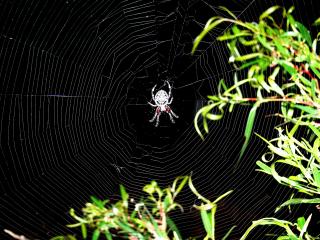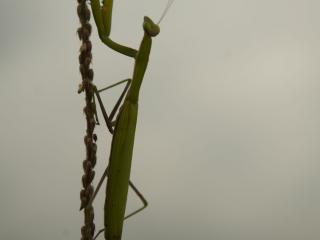Bugs and beetles
Predatory bugs
Bugs are a large group of insects which include many plant pests. However, they also include important natural enemies of other insect pests. Bugs have sucking mouthparts which they use to draw up plant juices and the juices of their prey. Unlike beetles, bugs have no pupal stage.
Predatory beetles
Beetles are a very large and diverse insect group. Beetles can be distinguished from bugs because they have mandibles (chewing, rather than sucking mouth parts), a rigid pair of fore wings which is often mistaken for a shell, with a pair of fine, hind wings folded beneath. Unlike bugs, beetles have larval, pupal and adult stages.
Predatory mites
Predatory mites feed on the young stages of thrips and some mites. Predatory mites tend to move much faster than pest mites and are often bright red or yellow in colour.
Lacewings
Lacewing larvae are predators of a wide range of pests including aphids, moth eggs and small larvae, scales and whiteflies. Lacewings occur naturally and are most common in spring; they are attracted to light and can sometimes be found near light sources. The larvae are often called trash bugs because of their habit of putting the remains of their prey on their backs. The adults are bright green or brown and have delicate, lacey wings, hence the name.
Parasites
Parasites deposit eggs on or into the pest or its eggs. The larva then hatches and ultimately consumes and kills the pest. Parasites tend to be host-specific, that is, they will only attack a particular species of pest. Most species of parasite are either wasps or flies.
Spiders
Spiders are voracious predators that feed on a wide range of pest insects. It is estimated that the weight of insects eaten annually by spiders outweighs the total weight of the entire human population! All spiders spin silk, but not all build webs for the purpose of catching prey.
Spiders such as the common wolf spider run down their prey as would a wolf, whilst a trapdoor spider lays in wait in its burrow until some prey happens past. Hunting spiders can play a part in controlling cockroaches in the house, whilst the unsightly webs of black and garden spiders contribute to control of flying insects in the garden.
It is therefore beneficial to keep spider-activity at a reasonable level in home and garden. Be careful though, as species such as the redback spider can give a nasty bite.
Praying mantids
Praying mantids eat whatever they can catch, including pests. Mantids are found on leaves, flowers and the branches of plants. They can blend into the background, making them difficult to see. Mantids use their two front legs to capture and hold prey.
Hover flies
Hover fly larvae are often found among large populations of aphids. Adults feed on pollen and nectar and are often mistaken for bees. However, unlike bees, adults will hover in the same place. The larvae feed on aphids and other soft-bodied insects.



